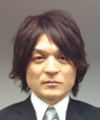 |
|||
|
|
|||
|
Feature Articles: Developments of the Visual Communication “Hikari Living” Project Vol. 12, No. 2, pp. 28–31, Feb. 2014. https://doi.org/10.53829/ntr201402fa6 Creation of Wide Business Domain Using Visual Communication ServicesAbstractVisual communication is one of the many promising applications of an optical broadband network. These Feature Articles provide an overview of services and report on the business research and development underway at NTT EAST and NTT WEST as part of the NTT Group’s efforts to develop and expand services that help to create a rich lifestyle by connecting people to each other and to society via video services. Keywords: videophone, space sharing, content sharing 1. IntroductionVisual communication services are known as tools for transmitting information using audiovisual technologies. However, we also define them as a means to more naturally and smoothly achieve mutual understanding and affinity between people by adding video to voice, under the concept of connecting people to people, and people to society. That results in something that makes our customers’ lives more comfortable and fulfilling. At NTT, we have been working on developing visual communication services such as videophones since the 1960s, when we were known as the Nippon Telegraph and Telephone Public Corporation. However, the use of videophones did not spread initially. The main reason for this is thought to be that the network had a low-quality narrow bandwidth and a relatively higher cost of use compared to now. Nowadays, most of the quality issues have been solved, although efforts are always ongoing to improve the network infrastructure and devices, and the business applications are expanding. A recent survey [1] found that the combined market of video-conferencing, web-conferencing, and audio-conferencing was valued at 42 billion yen in 2012 and is expected to expand in the future. By contrast, personal use of these services has not expanded yet, although users have come to have a positive idea of such services because of the attractive promotion of videophone functions on smartphones and tablets. 2. Toward expansion of personal visual communicationThe NTT Group provides personal videophone services such as FOMA and HIKARI FLET’S Phone. We conducted a questionnaire survey and found that people had various reasons for not using videophone services. Some of the reasons they gave are as follows: - Fundamental obstacles: “the voice phone is good enough”, “had no one to call on the videophone”, - Psychological factors: “resistance to put pressure on others to use the videophone”, “need to care about my personal appearance and the surrounding environment”, “cannot talk while doing other things”, - Functional factors: “no feeling of space-sharing and no sense of reality due to the small screen and insufficient video quality”, “complicated operation”, “difficult settings”, - Economic factors: “high price of videophone devices”, “telecommunication cost”, - Environmental factors: “few other people have videophone devices”. Moreover, many of these problematic factors occur simultaneously, which makes the situation even more complex. Of these problems, however, the functional factor of “a small screen” in particular was solvable. The eco-point system for home electronics initiated in Japan in May 2009 had induced consumers to purchase large screen televisions (TVs) that could receive digital terrestrial TV broadcasting. Consequently, by using these TVs as videophone screens, we are now able to have a large screen without worrying about the price of videophone devices. This provided a good opportunity to tackle the issue of expanding the personal use of visual communication. We conducted a survey on general consumers’ intended uses of videophones. The persona model of the survey was family communication, in which there seemed to be less resistance to using a videophone and frequent opportunities to use a telephone. Then, on the basis of the results, we set our initial target user as businessmen posted to remote locations and living away from their family and elderly people living alone. We also created a new concept of services, as follows: - New HIKARI visual communication using a large screen TV in living room, - Casual and effortless communication, - Sense of unity and space-sharing feeling, to convey atmosphere and emotions. This concept was named Hikari Living. By specifying a target user and a use case of the service, we gain the possibility to solve the fundamental obstacles and the psychological factors in the five problem areas described above. We can also achieve preferentially functional improvement, reduced cost, and widespread use of videophones. Through these efforts, we are creating a service to communicate seamlessly, in order to connect separated family members in the comfort of their living room, and in a lifestyle suitable for each family. In addition, we are developing a new use case, which involves establishing a connection environment that is not limited to the living room only, but includes any place inside or outside the home, for example, between the office and the home. We also aim to realize an environment in which social services (medical care, education, long-term care, and community services, etc.) can be accessed conveniently inside the home. We are stimulating demand for Hikari Living by proposing these capabilities (Fig. 1).
3. Concrete plan for attaining Hikari LivingTo meet the requirements of the Hikari Living concept, we set the goal to achieve the following features (Fig. 2).
(1) Stable and high quality moving images, and clear sound quality (functional factor), (2) Content sharing during calls (functional factor), (3) Simple configuration, easy operation (functional factor), (4) Inexpensive usage fee (economic factor). We first discuss the feeling of space-sharing and a sense of reality. To achieve this, it is necessary to ensure that the HD (high definition) quality video transmission has been adjusted for large screen TVs. Also, in environments where various life sounds exist, the application of acoustic echo cancellation technology with noise suppression developed by NTT Media Intelligence Laboratories ((1) in Fig. 2) helps to achieve natural and clear communication with no howling or acoustic echo. Here, we discuss the idea of casual and effortless communication. When people are in the same place, they often enjoy looking at photos and videos together while carrying on a conversation. We considered it important to be able to perform such typical activities with our service. Utilizing the content-sharing technology of NTT Service Evolution Laboratories ((2) in Fig. 2) enabled us to achieve this capability. In addition, it is necessary to be able to set up the device easily even by people who have never used a personal computer. It should also be as easy to operate as watching TV and making phone calls. Therefore, a simple setup guide was drawn up based on knowledge of user experience and a universal design that was studied at the NTT Service Evolution Laboratories ICT (Information and Communications Technology) Design Center ((3) in Fig. 2). Finally, to enable users to communicate in a relaxed way without worrying about the cost, we discussed with NTT EAST and NTT WEST the possibility of providing the service at a flat-rate fee. As a result, we have introduced a new videophone service at a flat-rate fee ((4) in Fig. 2). We provide the videophone service with these features using a set-top box that is connected to the TV, so that it can be used widely with TVs from any manufacturer. In these Feature Articles, we describe an overview and the business development of NTT EAST’s Hikari Share Place and NTT WEST’s Hikari Danran TV as services that embody the concept of Hikari Living. We also explain the technologies that support Hikari Living, specifically, how we achieve stable and high quality moving images and clear sound quality, and the technology that allows content sharing during calls. 4. Future prospectsThe aim of Hikari Living is to provide communication services to people separated by distance that allow them to feel like they are in the same place. This concept is becoming more common for various purposes such as remote learning and remote viewing of events such as wedding receptions. Hikari Living provides visual communication via the TV, which is indispensable to the lives of elderly people. Consideration is being given to provide this service in senior housing as part of efforts to improve the health of the elderly. It may take a little longer for personal use of videophones to become standard in people’s lives, but it will most likely happen eventually, since visual images have the power to convey ideas that cannot be expressed in words only. We would like to prompt many people to take notice of this power and to help them construct a rich lifestyle. We will therefore continue to promote efforts to expand our visual communication services. Reference
|
|||







